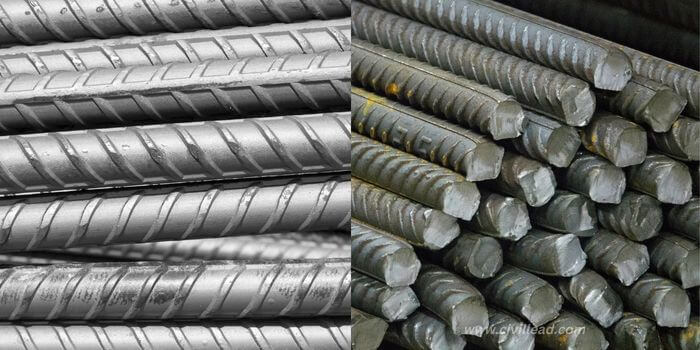High Alumina Cement Manufacturing (IS 6452: 1989): Discover the unique characteristics, applications, and benefits of High Alumina Cement. Learn about its rapid setting, high temperature resistance, and chemical resilience. Find answers to FAQs and explore its uses in construction and refractory industries. Get expert insights in this comprehensive guide.
Introduction
High Alumina Cement (HAC) is a specialized type of cement known for its unique characteristics and applications. It is manufactured according to the Indian Standard IS 6452:1989. In this comprehensive guide, we will delve into the world of High Alumina Cement, exploring its characteristics, hydration process, use in concrete, price, uses, advantages, disadvantages, and frequently asked questions. Let’s begin our journey into the fascinating world of High Alumina Cement.

Characteristics of High Alumina Cement
High Alumina Cement possesses several unique characteristics that set it apart from ordinary Portland cement. Some of the notable features include:
- High Alumina Content: As the name suggests, this cement contains a high proportion of alumina (approximately 40% to 50%), which imparts excellent refractory properties.
- Rapid Setting: High Alumina Cement exhibits rapid setting and hardening, making it ideal for projects that require quick strength gain.
- High Compressive Strength: It offers impressive compressive strength, allowing it to withstand heavy loads and high temperatures.
- Resistance to Chemical Attack: HAC shows exceptional resistance to chemical corrosion, making it suitable for applications in aggressive environments.
- Low Heat of Hydration: Compared to Portland cement, High Alumina Cement generates less heat during the hydration process, reducing the risk of thermal cracks.
- Low Porosity: The low porosity of this cement contributes to its excellent durability and resistance to water penetration.
- Sulfate Resistance: High Alumina Cement performs well in sulfate-rich environments, preventing the deterioration of concrete.
Hydration of High Alumina Cement
The hydration process of High Alumina Cement involves a chemical reaction between the cement and water. It proceeds in stages:
- Induction Period: After mixing with water, there is an initial dormant period before the cement starts to hydrate.
- Aluminate Hydration: Tri-calcium aluminate compounds react with water to form aluminum hydroxide gel and calcium aluminate hydrate.
- C-S-H Gel Formation: The formation of calcium-silicate-hydrate (C-S-H) gel contributes to the cement’s strength development.
- Setting and Hardening: High Alumina Cement sets and hardens rapidly, attaining substantial strength in a short period.
| Constituents | Content Percentage |
| Silica | 3-8% |
| Alumina | 37-41% |
| Lime | 36-40% |
| Iron Oxide | 9-10% |
| Titanium | 1.5-2% |
| Magnesium | 1% |
| Insoluble Resides | 1% |

High Alumina Cement Concrete
High Alumina Cement finds numerous applications in the construction industry, particularly in projects that require specialized properties. Some of the common uses of High Alumina Cement in concrete include:
- Refractory Castables: HAC is used to produce refractory castables, which are essential in lining furnaces and kilns due to their ability to withstand high temperatures.
- Chemical Resistant Concrete: Its resistance to chemical attack makes High Alumina Cement an excellent choice for structures exposed to harsh chemical environments.
- Marine Construction: In marine environments where seawater and salt can cause concrete degradation, High Alumina Cement provides enhanced durability.
- Bridge Deck Overlay: High Alumina Cement concrete overlays can be used to restore and strengthen deteriorated bridge decks.
- Rapid Repair: Due to its fast-setting properties, High Alumina Cement is preferred for rapid repair and rehabilitation projects.

The Results of the BRE Investigations
The British Research Establishment (BRE) conducted extensive investigations on High Alumina Cement. The findings are summarized below:
- Strength Gain: High Alumina Cement exhibits rapid strength development, allowing for quick turnaround times in construction projects.
- Durability: Concrete made with High Alumina Cement shows remarkable resistance to chemical attacks and high temperatures.
- Structural Performance: The results indicate that High Alumina Cement performs well in structural applications, providing robustness and longevity.
- Cracking Risk: Despite its advantageous properties, High Alumina Cement may be susceptible to the formation of calcium hydroxide, which can lead to the risk of delayed ettringite formation and cracking in certain conditions.
High Alumina Cement Price
The cost of High Alumina Cement can vary based on factors such as market demand, supplier, and quantity ordered. Generally, High Alumina Cement is more expensive than ordinary Portland cement due to its specialized properties and production process. It is crucial to source High Alumina Cement from reputable suppliers to ensure quality and consistency.
Uses of High Alumina Cement
High Alumina Cement finds application in a wide range of industries and projects, including:
- Refractory Industry: High Alumina Cement is a crucial component in the manufacturing of refractory castables, bricks, and monolithic products used in furnaces, kilns, and incinerators.
- Construction of High-Temperature Furnaces: Due to its ability to withstand high temperatures, High Alumina Cement is indispensable in constructing high-temperature furnaces for metal smelting and heat treatment.
- Marine Engineering: In marine construction, High Alumina Cement is utilized in structures like jetties, offshore platforms, and coastal defenses, where resistance to saltwater is vital.
- Chemical Plants: High Alumina Cement is preferred for concrete used in chemical plants, where exposure to corrosive chemicals is common.
- Bridge Rehabilitation: It is used in bridge deck overlays and repairs due to its rapid setting and hardening properties.
Advantages of High Alumina Cement
High Alumina Cement offers several advantages, making it a valuable material in specific applications:
- High Temperature Resistance: Its ability to withstand elevated temperatures makes it suitable for use in refractory applications and high-temperature industrial processes.
- Rapid Setting: High Alumina Cement sets and hardens quickly, reducing construction time and enhancing project efficiency.
- Chemical Resistance: It displays remarkable resistance to chemical attack, ensuring the longevity of structures in aggressive environments.
- Sulfate Resistance: High Alumina Cement is ideal for projects in sulfate-rich soils or water, preventing deterioration.
- Low Porosity: Its low porosity reduces water permeability, contributing to the durability of structures.
Disadvantages of High Alumina Cement
Despite its advantages, High Alumina Cement has some limitations and considerations:
- Shrinkage: High Alumina Cement exhibits higher shrinkage during curing, which may lead to cracking.
- Expensive: Compared to ordinary Portland cement, High Alumina Cement is more expensive, impacting project budgets.
- Delayed Ettringite Formation: In certain conditions, delayed ettringite formation (DEF) can occur, causing cracks and compromising the structure’s integrity.
- Storage Considerations: High Alumina Cement has a limited shelf life and should be stored properly to maintain its quality.
- Special Handling: Due to its rapid setting, contractors must handle High Alumina Cement with precision during construction.
FAQs
- What is High Alumina Cement (HAC)?
High Alumina Cement is a specialized type of cement with a high alumina content, renowned for its rapid setting, high strength, and resistance to chemical attack. It is commonly used in refractory applications, marine construction, and high-temperature industrial processes. - How is High Alumina Cement manufactured?
High Alumina Cement is manufactured by fusing bauxite and limestone in a rotary kiln at high temperatures. The resulting clinker is then finely ground to produce the cement. - Are there any precautions or considerations when using High Alumina Cement?
Yes, some precautions must be taken when using High Alumina Cement. Contractors should ensure proper storage, handle the cement with care due to its rapid setting, and take measures to mitigate the risk of delayed ettringite formation. - What is High Alumina Cement (HAC)?
High Alumina Cement is a specialized type of cement that contains a high percentage of alumina. It possesses unique properties such as rapid setting, high temperature resistance, and excellent chemical resistance, making it suitable for various applications in the construction and refractory industries. - What are the applications of High Alumina Cement?
High Alumina Cement finds applications in refractory castables, high-temperature furnaces, marine engineering projects, chemical plants, and bridge rehabilitation, among others. - Is High Alumina Cement more expensive than ordinary Portland cement?
Yes, High Alumina Cement is generally more expensive than ordinary Portland cement due to its specialized properties and production process.
Conclusion
High Alumina Cement (HAC) is a remarkable construction material with unique characteristics that make it ideal for specific applications. From its rapid setting and high compressive strength to its resistance to chemical attack, High Alumina Cement offers advantages that set it apart from traditional cements. However, it is essential to be aware of its limitations, such as the risk of delayed ettringite formation. When used with care and expertise, High Alumina Cement proves to be a valuable asset in a wide range of projects, contributing to the creation of durable and resilient structures.
============================================







